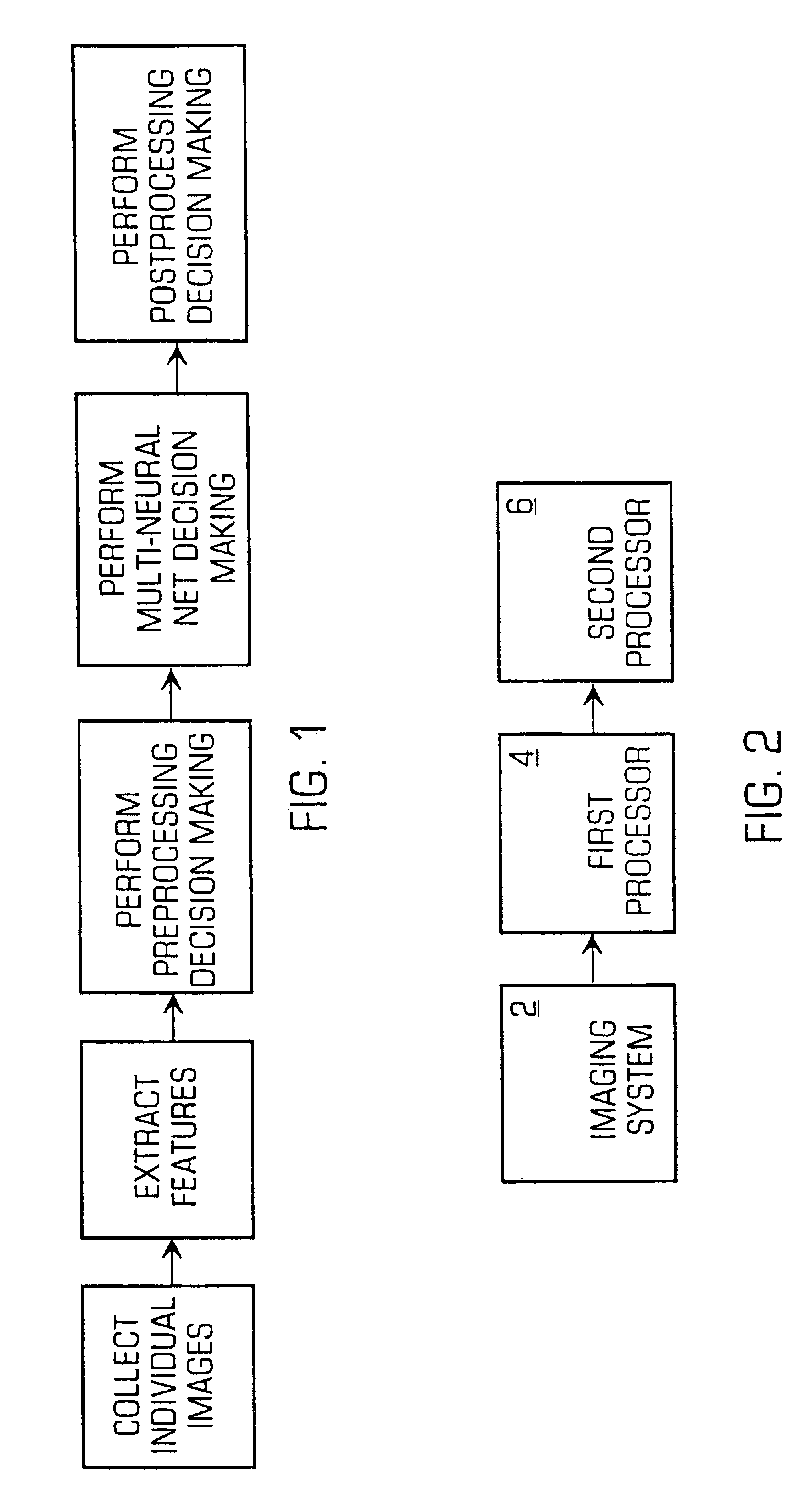Multi-neural net imaging apparatus and method
a multi-neural net and imaging apparatus technology, applied in the field of imaging apparatus, can solve the problems of difficult to accurately and reliably classify particles in samples containing artifacts, and achieve the effect of effectively partitioning the decision space and effective use of information
- Summary
- Abstract
- Description
- Claims
- Application Information
AI Technical Summary
Benefits of technology
Problems solved by technology
Method used
Image
Examples
Embodiment Construction
[0032]The present invention comprises a method and apparatus for making decisions about the classification of individual particle images in an ensemble of images of biological particles for the purpose of identifying each individual image, and determining the number of images in each given class of particles.
[0033]Basic Method and Apparatus
[0034]The method is generally shown schematically in FIG. 1, and comprises 5 basic steps:[0035]1) Collect individual images,[0036]2) Extract particle features from each individual image,[0037]3) Apply certain pre-processing rules to determine classifications of individual images or how the classification process will be performed,[0038]4) Classify the individual images using a multiple neural net decision making structure, and[0039]5) Analyze the ensemble of decisions or a subset of the ensemble of decisions to determine the overall classification of the ensemble or changes to classifications of certain subsets or individual images.
[0040]The metho...
PUM
| Property | Measurement | Unit |
|---|---|---|
| physical characteristic | aaaaa | aaaaa |
| symmetry | aaaaa | aaaaa |
| lengths | aaaaa | aaaaa |
Abstract
Description
Claims
Application Information
 Login to View More
Login to View More - R&D
- Intellectual Property
- Life Sciences
- Materials
- Tech Scout
- Unparalleled Data Quality
- Higher Quality Content
- 60% Fewer Hallucinations
Browse by: Latest US Patents, China's latest patents, Technical Efficacy Thesaurus, Application Domain, Technology Topic, Popular Technical Reports.
© 2025 PatSnap. All rights reserved.Legal|Privacy policy|Modern Slavery Act Transparency Statement|Sitemap|About US| Contact US: help@patsnap.com



